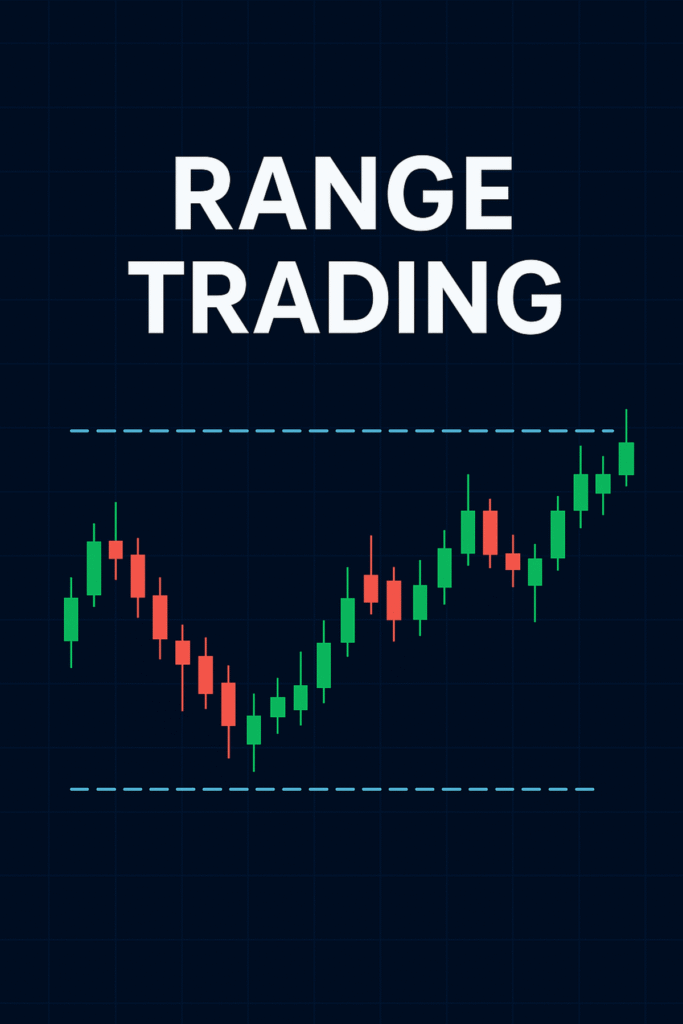Not every market trends. Sometimes price moves up and down between two levels, refusing to break out. Many traders get frustrated during these periods. But smart traders know there’s money to be made inside these “boxes.” This is called range trading, and it can be one of the simplest ways to profit if you know what to look for.
Learn the Secret of Forex Trading, Click here to download a free e-book now
Key Summary
- Range trading means buying at support and selling at resistance inside a sideways market.
- It works best when there’s no clear trend and price is consolidating.
- Patience is required—you wait for price to hit the edges of the range.
- Tools like RSI, candlestick patterns, and moving averages help confirm entries.
What is Range Trading?
Range trading is when you trade within a defined zone. Price bounces between support (the floor) and resistance (the ceiling) without breaking out.
Instead of chasing trends, you profit from these repetitive moves. For example:
- If price touches support, you buy.
- If price touches resistance, you sell.
Think of it like playing ping-pong—price bounces back and forth until it finally breaks.
Why Range Trading Works
- Markets spend most of their time ranging – Studies show forex markets range about 70% of the time.
- Predictable levels – Support and resistance provide clear zones for entries and exits.
- Low stress trading – You don’t need big moves to profit, just small consistent gains.
Range Trading Strategy (Step by Step)
Identify the Range
- Use horizontal support and resistance lines.
- Price should clearly bounce between two levels multiple times.
Buy at Support
- When price reaches the lower boundary, look for bullish signals: pin bars, engulfing candles, or RSI oversold (below 30).
Sell at Resistance
- When price reaches the upper boundary, look for bearish signals: shooting stars, engulfing candles, or RSI overbought (above 70).
Set Stop Losses
- For buys: stop loss goes below support.
- For sells: stop loss goes above resistance.
Take Profits
- Don’t get greedy. Exit trades near the opposite boundary of the range.
Example of Range Trading
GBP/USD has been moving between 1.2500 (support) and 1.2700 (resistance). Each time price touches 1.2500, it bounces upward. Each time it touches 1.2700, it drops. By buying at support and selling at resistance, a trader can collect steady profits until a breakout happens.
Common Mistakes in Range Trading
- Not waiting for confirmation at support/resistance.
- Forgetting that ranges eventually break out.
- Setting stops too tight and getting knocked out early.
FAQ on Range Trading
Q: What timeframes are best for range trading?
A: 1H, 4H, and Daily charts work well. Lower timeframes often give false ranges.
Q: How do I know when a range will break?
A: Watch for strong volume, news events, or multiple failed bounces. When price breaks out with momentum, the range may be over.
Q: Can beginners use range trading?
A: Yes. It’s one of the easiest strategies for new traders to understand and apply.
Q: Do I need indicators for range trading?
A: No, but RSI and Bollinger Bands can help confirm overbought/oversold levels.
Q: How do I manage risk in range trading?
A: Always place stop losses outside the range and avoid risking more than 1–2% per trade.
Bottom Line
Range trading is perfect for sideways markets. Instead of waiting endlessly for a trend, you can profit from predictable bounces between support and resistance.

